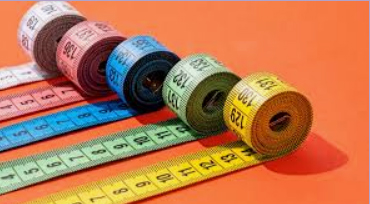 Vinod Chandrashekhar Dixit Vinod Chandrashekhar Dixit
National Tape Measure Day is celebrated on July 14th. The day in 1868 when Alvin J. Fellows of New Haven, Connecticut, received a patent for “Improvements in Tape Measures”, which included a locking mechanism. The invention of the ruler, the folding rule, and the subsequent measuring changed everything for builders, dressmakers and many other professions. National Tape Measure Day is here to show appreciation for and shed a bit of light on the importance of this everyday invention. The day is dedicated to recognize the importance of precision and accuracy in various industries and everyday life. The tape measure, a simple yet versatile tool, plays a crucial role in ensuring that pro jects are completed with precision and accuracy. The day offers an ideal opportunity to consider the significance of this unassuming tool that makes the lives of so many creators much easier.
The first recorded use of the tape measure goes back to the Romans, utilizing marked strips of leather. Before Fellows’ patent, Englishman James Chesterman designed a steel measuring tape, but it was expensive for its time. At $17 in 1853, it was equivalent to $300 in today’s U.S. d ollars.
The tape measure we know and use now comes in a wide array of sizes, colors, and materials. You can find some smaller than the palm of your hand or bigger in lengths of 300+ feet. The basic design on which all modern spring tape measures are built can trace its origins back to an 1864 patent by a Meriden, Connecticut resident named William H. Bangs Jr. According to the text of his patent, Bang’s tape measure was an improvement on other versions previously designed.
The longest tape measure in the world is gold plated and was made in 1956 by a surveyor and tape- maker, Justus Roe, and it measures 180 meters (600 feet). The spring tape measure has existed in the U.S. since Bang’s patent in 1864, but its usage did not become very popular due to the difficulty in communication from one town to another and the expense of the tape measure. In the late 1920s, carpenters began slowly adopting H. A. Farrand’s design is the one more commonly used. Today, different varieties of tape measures are available to meet the varying needs of the jobsite. Stanley and other manufactures offer a wide range of tapes with different locking mechanisms, colors, scales, lengths, widths, and standouts.
Tape measures have been an essential tool for various professions, including construction, carpentry, tailoring, and engineering. They provide a quick and easy way to measure distances, widths, and heights, making them an indispensable tool in many industries. Some people in certain trades may find reason to use a tape measure every day. That’s why tailors often have one draped around their necks at all times!
National Tape Measure Day on July 14th is a celebration of the humble tape measure and its significant impact on various industries and everyday life. By recognizing the importance of precision and accuracy, we can appreciate the role that tape measures play in ensuring that projects are completed with excellence. |
